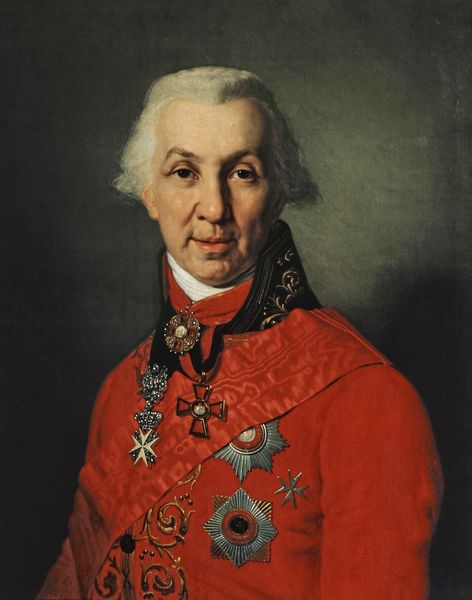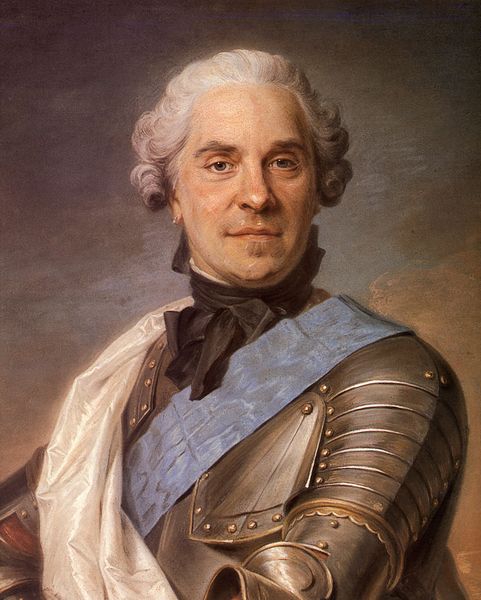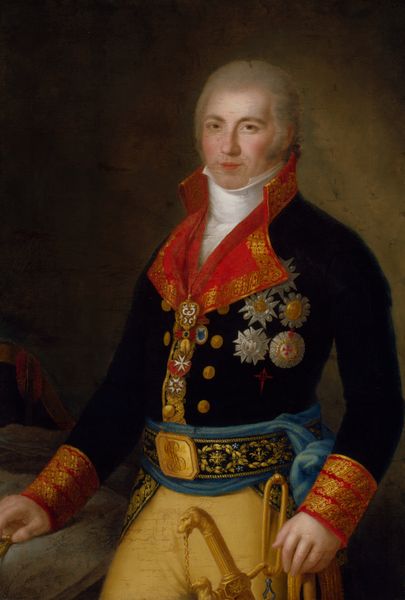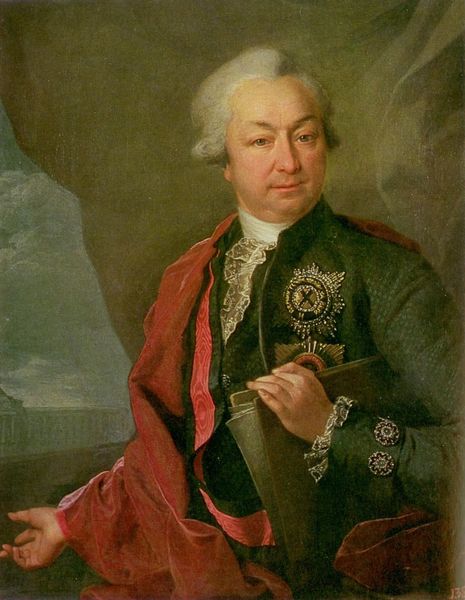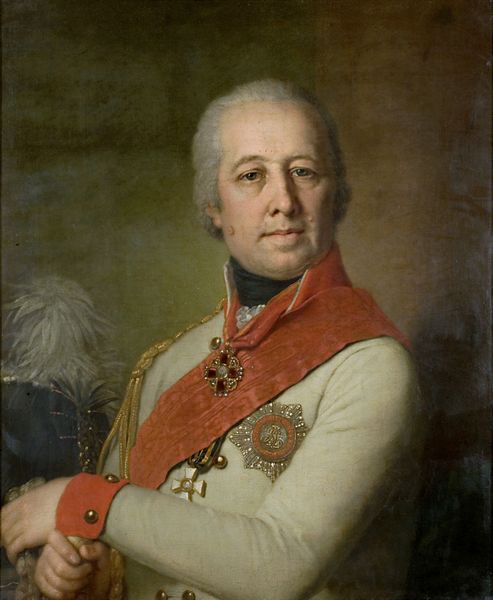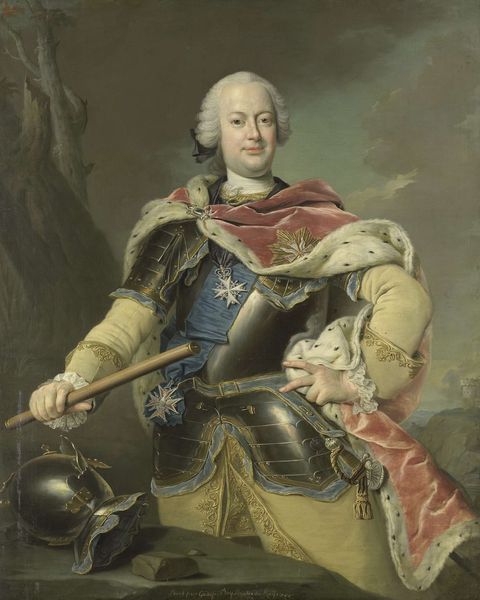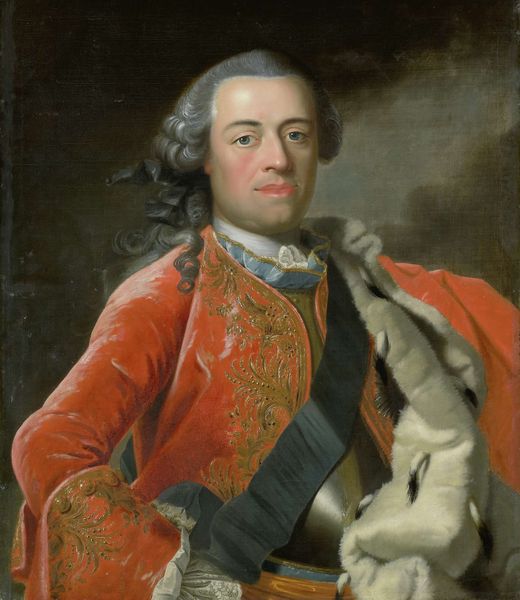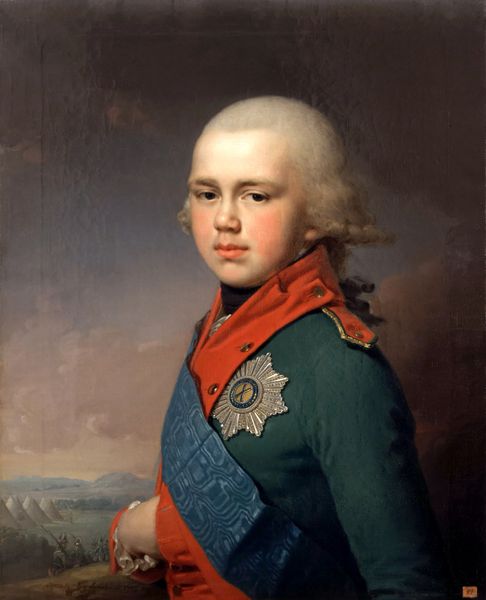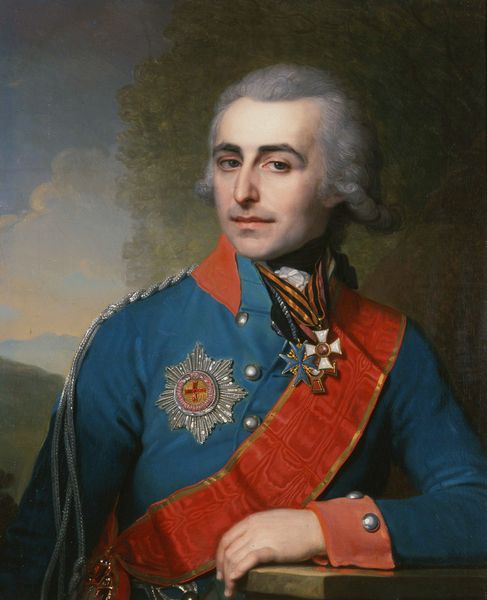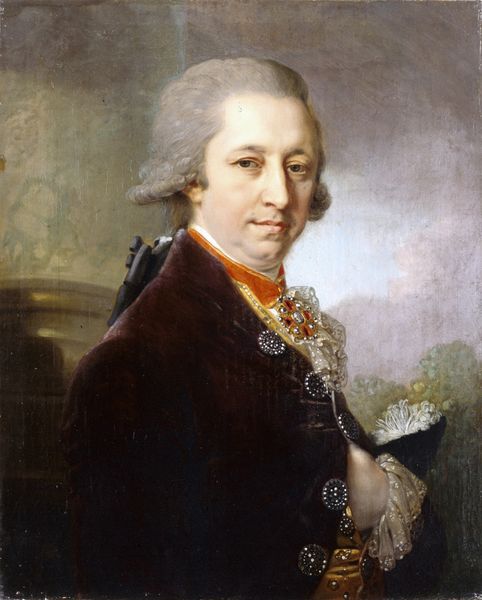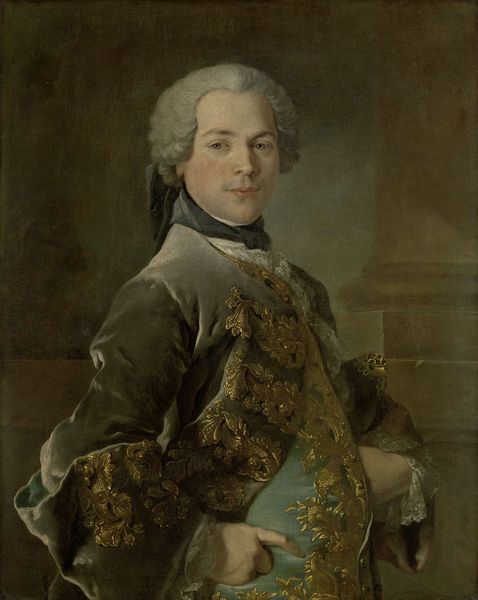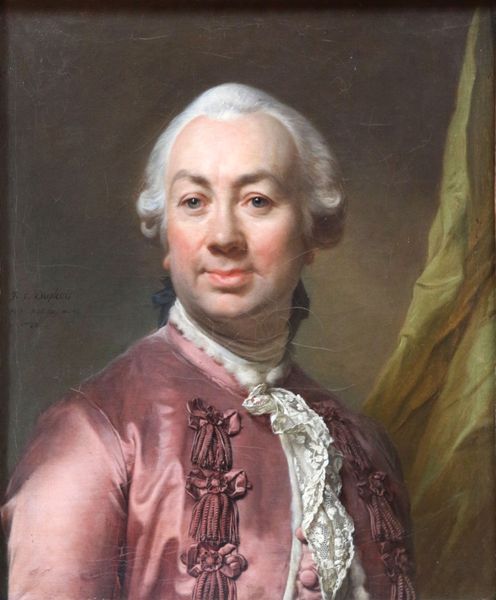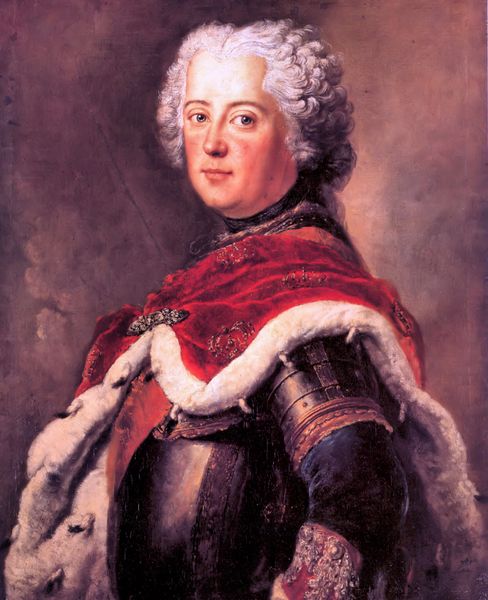
painting, oil-paint
#
portrait
#
painting
#
oil-paint
#
romanticism
#
history-painting
Copyright: Public domain
Curator: This is Vladimir Borovikovsky's 1799 portrait of D.P. Troschinsky, an oil painting showcasing the subject in exquisite detail. Editor: My first thought? Austerity. He appears stern, perhaps even a bit world-weary, despite all the finery of his attire. There's something almost melancholic about it. Curator: That melancholy resonates, doesn’t it? Considering Troschinsky’s historical context, it makes sense. He was a Secretary of State during a turbulent period, a time of political and social upheaval during Catherine the Great’s and Paul I’s reigns. Borovikovsky captures more than just his likeness. He hints at the weight of responsibility this man carried. Editor: Absolutely. Notice the cross. Symbols of honor were incredibly potent visual tools for conveying status and worth. His gaze, directed at the viewer, suggests not only confidence but also a hint of the burdens of power. Curator: Precisely. And beyond the face, Borovikovsky meticulously renders the opulent fabrics. This serves as visual propaganda almost, showcasing Troschinsky’s importance. The Romanticism style here softens the traditional severity often associated with portraiture of powerful men. This introduces a degree of humanization, subtly implying deeper, internal complexity. Editor: Indeed. The soft brushstrokes and the almost luminous quality of the skin certainly push it in that direction. Also, note the columns suggested in the background. It’s a classic symbol, a callback to ideals of statehood that he, in his official capacity, must embody and protect. Borovikovsky wasn’t simply recording appearance. He composed a layered representation using symbolic shorthand. Curator: Looking at Troschinsky through a modern lens allows us to critically examine the construction of masculinity and power in late 18th-century Russia. How class, gender, and political authority intertwined, and how art reinforced existing power structures. The symbolism helps unpack complex historical meanings, which resonate still. Editor: A valuable point, revealing the painting as much more than mere ornamentation. Borovikovsky presented both image and the ideals a powerful man of the era had to personify, and how they wanted to be remembered.
Comments
No comments
Be the first to comment and join the conversation on the ultimate creative platform.
